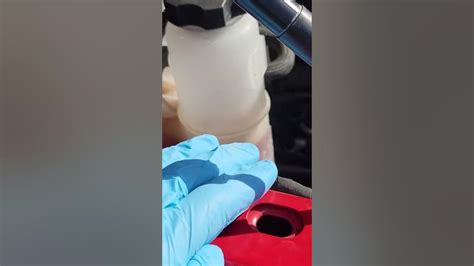How To Stop Hemi Tick
Ronan Farrow
Apr 02, 2025 · 3 min read

Table of Contents
How to Stop a Hemifacial Spasm (Hemitic)
A hemifacial spasm, often mistakenly referred to as a "hemifacial tic," is a neurological condition causing involuntary muscle contractions on one side of the face. It's not a tic in the traditional sense (like a nervous tic), but rather a more persistent and often debilitating condition. While there's no single cure, several effective strategies can help manage and even stop a hemifacial spasm. This post explores various approaches to alleviate symptoms and improve quality of life.
Understanding Hemifacial Spasm: Causes and Symptoms
Before diving into treatment options, let's clarify the nature of this condition. Hemifacial spasms are typically caused by irritation or compression of the facial nerve (cranial nerve VII). This irritation can stem from various sources, including:
- Blood vessel compression: A common cause is a blood vessel pressing against the facial nerve.
- Tumors or other lesions: Less frequently, tumors or other masses near the nerve can contribute.
- Multiple sclerosis: In rare instances, MS may be a contributing factor.
- Trauma: Facial injury can sometimes damage the nerve and lead to spasms.
The primary symptom is involuntary twitching or spasms affecting one side of the face. This can range from subtle flickering to more pronounced, forceful contractions. Symptoms might include:
- Eyelid twitching: Often the first sign, affecting the upper or lower eyelid.
- Twitching in the cheek, mouth, or nose: The spasms can spread to other facial muscles.
- Facial distortion: Severe spasms can visibly distort facial features.
- Pain: While not always present, some individuals experience pain along with the spasms.
Effective Strategies to Manage and Stop Hemifacial Spasm
Managing hemifacial spasm requires a multi-pronged approach, combining medical interventions with lifestyle adjustments.
1. Medical Treatments: Finding the Right Approach
Several medical treatments can be highly effective in reducing or eliminating hemifacial spasms:
- Botox Injections: This is often the first-line treatment. Botox temporarily weakens the affected muscles, reducing spasms. Regular injections are usually required for sustained relief.
- Medication: While less commonly used as a primary treatment, certain medications may help manage associated pain or muscle stiffness. Your doctor can determine if medication is appropriate for your specific situation.
- Surgery (Microvascular Decompression): In cases where Botox is ineffective or symptoms are severe, surgery might be considered. This procedure involves relieving pressure on the facial nerve caused by a blood vessel. It's a more invasive option with potential risks and benefits that should be discussed thoroughly with your surgeon.
2. Lifestyle Adjustments: Supporting Your Recovery
Beyond medical treatments, several lifestyle changes can complement your treatment plan and improve your overall well-being:
- Stress Management: Stress can exacerbate spasms. Practicing relaxation techniques like deep breathing exercises, yoga, or meditation can be beneficial.
- Adequate Sleep: Getting enough sleep helps regulate the nervous system and may reduce spasm frequency.
- Healthy Diet: A balanced diet supports overall health and may indirectly influence nerve function. Focus on nutrient-rich foods.
- Avoid Caffeine and Alcohol: These substances can stimulate the nervous system and potentially worsen spasms.
- Limit Screen Time: Prolonged screen time can contribute to eye strain, which could aggravate spasms, particularly eyelid twitching.
3. Seeking Professional Help: The Importance of Diagnosis and Treatment
It's crucial to consult a neurologist or ophthalmologist if you suspect you have a hemifacial spasm. They can properly diagnose the condition and recommend the most appropriate treatment plan based on your individual needs. Early intervention is key to effective management.
Conclusion: Hope for Managing Hemifacial Spasm
While a hemifacial spasm can be a challenging condition, it's important to remember that effective management strategies are available. Combining medical treatments with lifestyle adjustments offers significant hope for reducing symptoms and improving quality of life. Remember to consult with your healthcare provider for personalized guidance and support. They can help you navigate the complexities of this condition and create a plan that best meets your individual needs.
Featured Posts
Also read the following articles
| Article Title | Date |
|---|---|
| How To Run Ac Water Pump With Solar | Apr 02, 2025 |
| How To Sell Alcohol | Apr 02, 2025 |
| How To Save A Dying Tree From Lack Of Water | Apr 02, 2025 |
| How To Start An Alcohol Brand | Apr 02, 2025 |
| How To Tell If Salt Cell Is Bad | Apr 02, 2025 |
Latest Posts
-
How Hot Do Electric Baseboard Heaters Get
Apr 04, 2025
-
How Hot Do Block Heaters Get
Apr 04, 2025
-
How Hot Can Concrete Get
Apr 04, 2025
-
How Hospice Became A For Profit Hustle
Apr 04, 2025
-
How Historically Accurate Is The Nightingale
Apr 04, 2025
Thank you for visiting our website which covers about How To Stop Hemi Tick . We hope the information provided has been useful to you. Feel free to contact us if you have any questions or need further assistance. See you next time and don't miss to bookmark.
